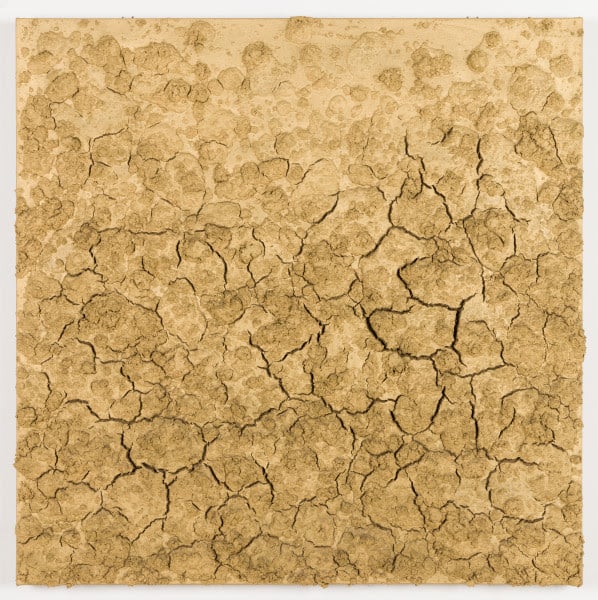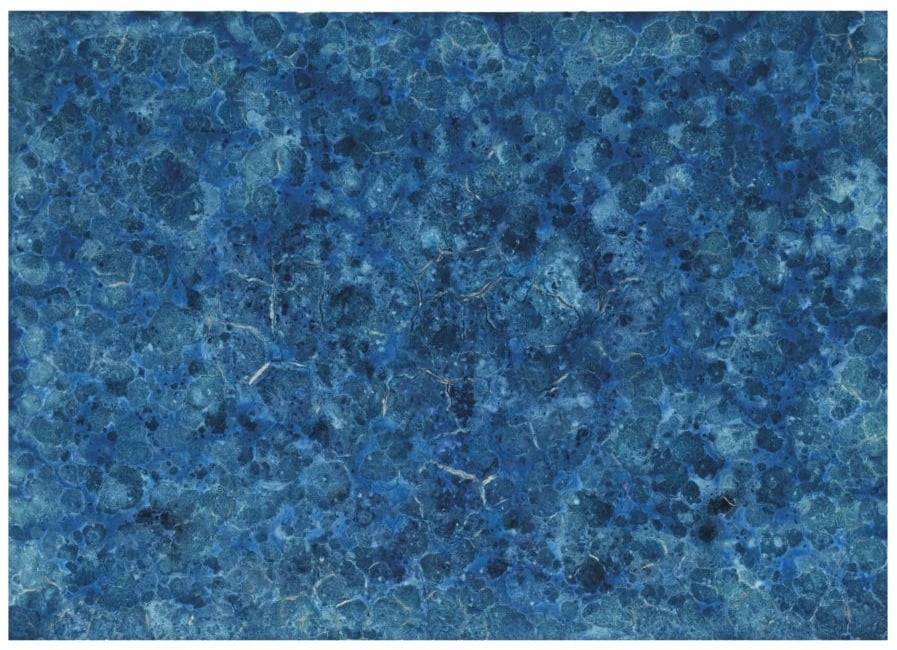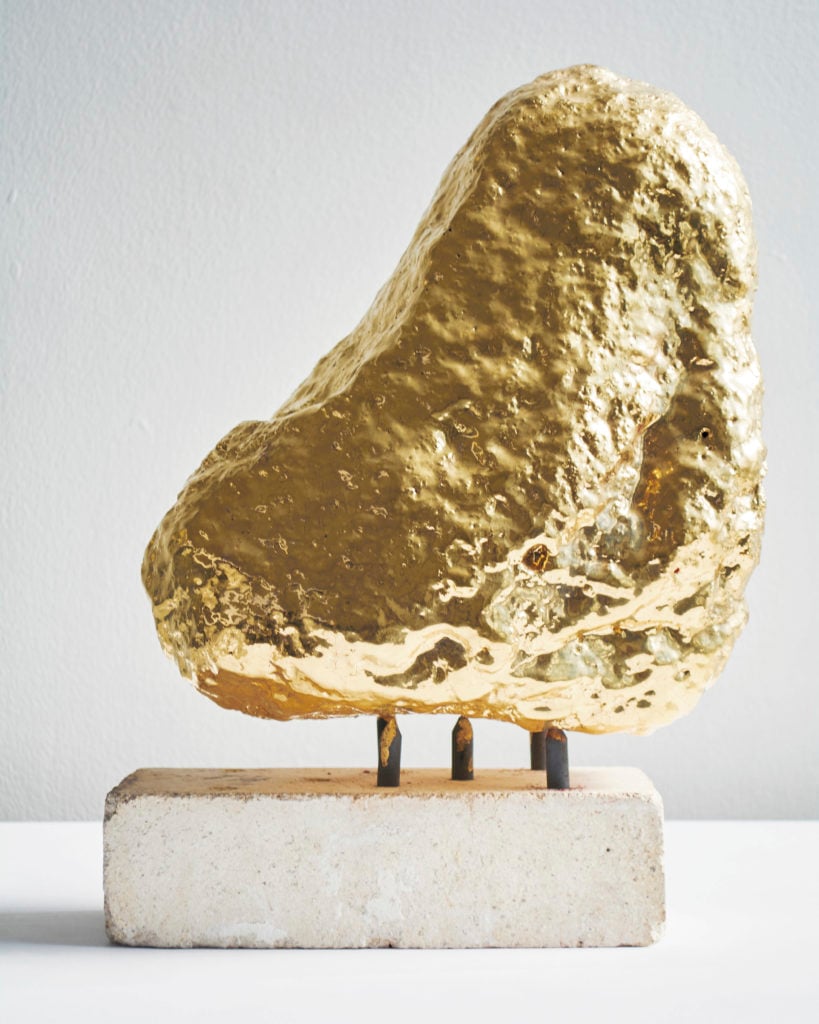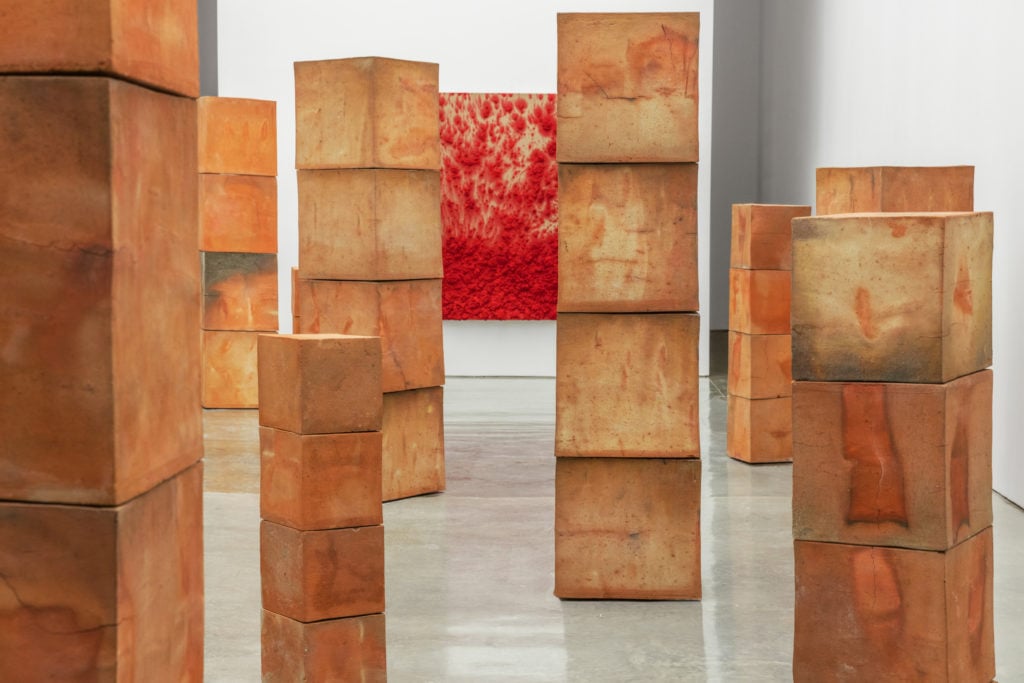In the Studio
In the Studio With Bosco Sodi
See a 360-degree video of the Mexico City-born artist Bosco Sodi at work as part of artnet's "In the Studio" series.
See a 360-degree video of the Mexico City-born artist Bosco Sodi at work as part of artnet's "In the Studio" series.
Artnet News

To an outside observer, the creation of a work of art can seem like a magical process, with the artist dreaming up a concept and then transmuting it from pure ether into an inspired tangible object. But while the artwork can seem effortless when seen in its finished form, it is in fact the product of trial and error, honed skills, experience, and, in many cases, significant physical exertion—all taking place in the private laboratory that is the artist’s studio. Now, artnet News has teamed up with Dobel Tequila to present the “In the Studio” series, providing a rare glimpse inside this mysterious process with the help of 360-degree video technology. We chose artists who combine technical virtuosity with a relentless appetite for invention. Each has mastered a seemingly traditional medium—from painting to weaving to drawing—in order to take it somewhere entirely new.
The artist Bosco Sodi makes paintings that are less conceptual than they are geological, fusing simple materials together in a way that can resemble the cracked surface of a parched riverbed, the crags of a mossy rock face, or even a glowing lava flow. Born in Mexico City and based between there and New York, Barcelona, and Berlin (which gives you an idea of how in-demand he is as an artist), Sodi creates his work through a complicated process that involves laying a canvas on its back and then gradually applying sedimentary strata of sawdust, natural fibers, vivid pigments, and liquid until, over time, they accrete into a vibrant mass protruding from frame.
The artist, whose work reflects influences ranging from l’art informel and Antoni Tàpies to the vibrant colors of Mexico, has leveraged his success to create opportunities for a whole new generation of artists in his native country: in 2014, Sodi created Fundación Casa Wabi, a Tadao Ando-designed artist residency on the coast of Oaxaca where clay and film programs are offered amid a spirit of engagement with the local community.
Here, watch a 360-degree video of the artist at work, watching his unique paintings being formed, layer by layer, drip by drip. (Water is a key element in his process, as its presence determines the degree of cracks on a work’s surface.) Afterwards, read an interview with the artist in which he explains how he approaches the creation of his art.

Bosco Sodi, Untitled (2018). Courtesy of the artist and Kasmin Gallery. Photography by Diego Flores.
You create your paintings by laying the canvas down on its back and then pouring on layers of pigments and other materials to build up richly colored surfaces marked by riveting topography, like the floor of an ancient cave. How would you describe your unique way of working?
I have developed my technique through a lot of research and experimentation—it’s a very physical way of working, with constant contact between myself and the materials and elements. There’s always an intense energy exchange between the work and myself.
What are the ingredients in the artwork you are making in the video?
I always work with the same materials: sawdust, raw pigment, and organic fibers. I like to do my own paint-mixing, as you can see in the video.
Tell me about the piece you are working on now—what is it, and is it intended for any particular show or destination?
The artwork is from a new series called “Genesis” that talks about duality in life—all of the paintings are in black and white. I’m making the painting for my next show at Blain|Southern in London that opens on January 29th—either that or the one at Galería Hilario Galguera in Mexico that opens on February 5th. They still have to come and choose.

Bosco Sodi, Organic Blue (2009). Courtesy of the artist.
You sometimes work at enormous scale. What is the largest piece you’ve made, and where is it now?
It’s in the collection of the Fundación Jumex in Mexico City, and it’s a big blue painting called ORGANIC BLUE that is 12 feet high by 36 feet long.
What are the most indispensable items in your studio?
My raw pigments, which I buy in bulk; good canvas; different types of saw dust; and a lot of space to work.

Bosco Sodi, Untitled (2014). Photography by Kevin Kunstadt, New York.
When do you like to go to your studio? Then what is the first thing you do when you arrive, and why?
Normally I go early in the morning, and the first thing I do is to look at how the paintings have evolved from the previous day—how they have changed on their own. After that, I begin to work again.
What kind of atmosphere do you prefer when you work?
I don’t like to work with assistants—I like to do it all myself, from the stretching of the canvas to the mixing to the painting, of course. I love music, but normally when I paint I prefer total silence, and total solitude.

Installation view of Bosco Sodi’s Caryatids at Kasmin Gallery. November 2, 2017-January 6, 2018. Photography by Diego Flores.
How do you know when an artwork is finished?
It’s difficult to explain. It comes from the inside… you just know.
When you feel stuck in the studio, what do you do to get un-stuck?
I spend time with my family, or read a book. I love going to the movies, too.